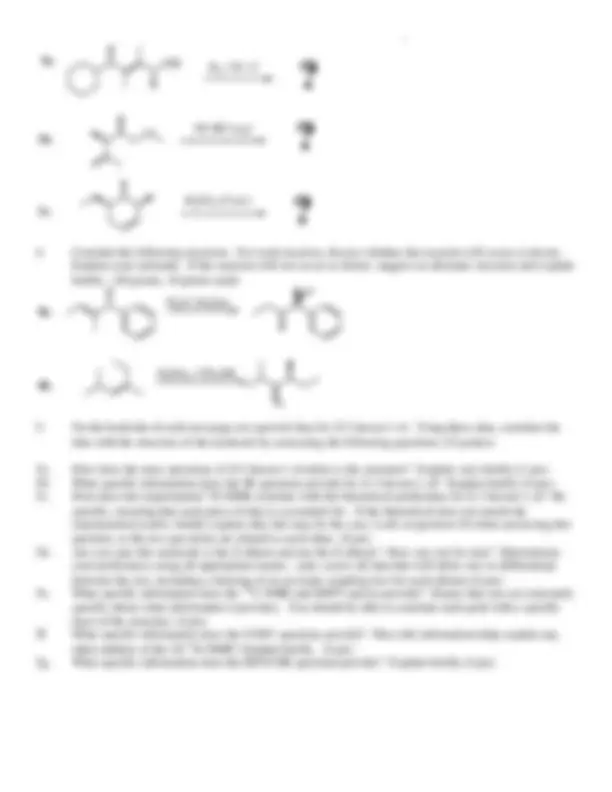



Study with the several resources on Docsity

Earn points by helping other students or get them with a premium plan


Prepare for your exams
Study with the several resources on Docsity

Earn points to download
Earn points by helping other students or get them with a premium plan
Community
Ask the community for help and clear up your study doubts
Discover the best universities in your country according to Docsity users
Free resources
Download our free guides on studying techniques, anxiety management strategies, and thesis advice from Docsity tutors
Material Type: Exam; Class: Organic Chemistry II; Subject: Chemistry; University: Whittier College; Term: Spring 2004;
Typology: Exams
1 / 2

This page cannot be seen from the preview
Don't miss anything!


Name: Whittier College
115 Points Total February 24, 2004
3a.
3b.
H 2 / Pd / C
OH
O
1M HCl (aq)
3c.
4
H 2 SO 4 (Conc)
4a.
4b. OH
H 2 O / Reflux
OH
5a. How does the mass spectrum of Z-3-hexen-1-ol relate to the structure? Explain very briefly (2 pts) 5b. What specific information does the IR spectrum provide for Z-3-hexen-1-ol? Explain briefly (4 pts). 5c. How does the experimental 1 H-NMR correlate with the theoretical predictions for Z-3-hexen-1-ol? Be specific, ensuring that each piece of data is accounted for. If the theoretical does not match the experimental results, briefly explain why this may be the case. Look at question 5d when answering this question, as the two que stions are related to each other. (8 pts) 5d. Are you sure this molecule is the Z alkene and not the E alkene? How can you be sure? Demonstrate your proficiency using all appropriate means. (aka: assess all data that will allow one to differentiate between the two, including a drawing of an accurate coupling tree for each alkene) (6 pts) 5e. What specific information does the 13 C NMR and DEPT spectra provide? Ensure that you are extremely specific about what information it provides. You should be able to correlate each peak with a specific facet of the structure. (4 pts) 5f. What specific information does the COSY spectrum provide? Does this information help explain any other oddities of the 1D 1 H-NMR? Explain briefly. (4 pts) 5g. What specific information does the HETCOR spectrum provide? Explain briefly (4 pts)